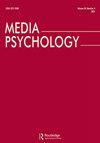研究负面认知对企业社交媒体使用的影响
IF 2.6
2区 心理学
Q1 COMMUNICATION
引用次数: 0
摘要
许多组织未能从自愿沟通和协作工具中获得最佳收益,例如企业社交媒体(ESM),其使用取决于员工的自由裁量行为。本研究探讨了员工对这些媒体传达的内容的看法如何影响ESM的使用。具体而言,本文报告了一项调查研究(N = 619),通过亲共享规范和知识共享意图来检验消极认知与ESM使用之间的关系。研究结果表明,组织成员对在线交流的消极看法与回避反应相一致,并且与平台使用率低有关。这种关系在一定程度上受亲分享规范和知识分享意愿的中介作用,因此,消极认知会破坏亲分享规范和降低知识分享意愿,最终减少ESM的使用。研究结果强调,与公共和大众媒体环境相比,组织环境中与负面媒体内容相关的潜在心理机制存在潜在差异。本研究结合媒介选择文献和媒介心理学的观点来研究技术采用,并扩展了我们对组织环境中平台使用的潜在障碍和驱动因素的理解。本文章由计算机程序翻译,如有差异,请以英文原文为准。
Examining the Implications of Negativity Perceptions for Enterprise Social Media Use
Many organizations fail to optimally benefit from voluntary communication and collaboration tools – e.g. enterprise social media (ESM) – where use depends on workers’ discretionary behaviors. This study explores how ESM use is informed by employees’ perceptions of the content these media convey. Specifically, this paper reports on a survey study (N = 619) to examine the relationship between negativity perceptions and ESM use, through pro-sharing norms and knowledge-sharing intentions. The findings indicate that negativity perceptions of online communication are met with avoidance responses by organizational members and are associated with low platform usage. This relationship is partially mediated by pro-sharing norms and knowledge-sharing intentions, such that negativity perceptions undermine pro-sharing norms and lower knowledge-sharing intention, ultimately reducing ESM use. The findings highlight a potential difference in the underlying psychological mechanisms related to negative media content in organizational environments compared to public and mass media environments. This study integrates media selection literature and media psychology perspectives to study technology adoption and expands our understanding of the potential barriers and drivers of platform use in organizational contexts.
求助全文
通过发布文献求助,成功后即可免费获取论文全文。
去求助
来源期刊

Media Psychology
Multiple-
CiteScore
8.60
自引率
7.10%
发文量
30
期刊介绍:
Media Psychology is an interdisciplinary journal devoted to publishing theoretically-oriented empirical research that is at the intersection of psychology and media communication. These topics include media uses, processes, and effects. Such research is already well represented in mainstream journals in psychology and communication, but its publication is dispersed across many sources. Therefore, scholars working on common issues and problems in various disciplines often cannot fully utilize the contributions of kindred spirits in cognate disciplines.
 求助内容:
求助内容: 应助结果提醒方式:
应助结果提醒方式:


